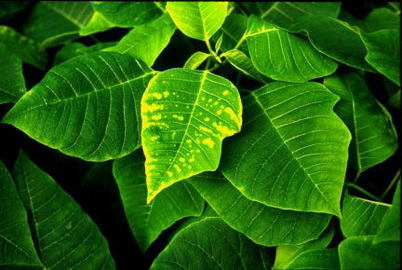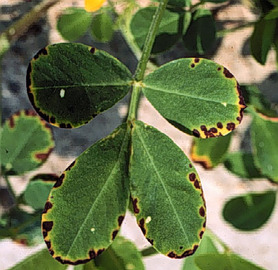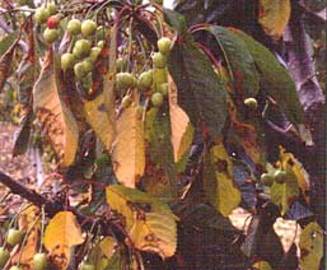Defining Phytotoxicity Defining Phytotoxicity

Phytotoxicity can simply be described as plant poisoning. It is the damage to plants caused by insecticides, fungicides and fertilizers. This usually occurs when a substance is sprayed onto plants; those plants may have negative affects afterwards. Negative effects may include death, abnormal growth or discoloration of plants.
Occurrence of Phytotoxicity

There are many ways that phytotoxicity can happen and there are usual and different time frames wherein the effects will be observed. Just like humans, plants react to agents that may cause illnesses and diseases.
Over-spraying or too much substance prayed onto plants can result in phytotoxicity. The plants may tolerate a substance in smaller doses, but sometimes plant growers, aware or not, they over fill their plants only to find out that they are already poisoning them. This is the main reason why most of the lawn and garden products have directions and suggested dosages stated in their packages.
Some substances do not cause harmful effects to plants the first time they are used and sprayed. Phytotoxicity may result after a number of uses although the first and initial use provided no negative signs. This could be explained by some factors such as;
• The grower is not giving enough time between each application that is why the chemicals are building up.
• The possibility that the weather impacts certain substances. This can happen when there is lack of rain or the chemicals that work best in cooler climates are subjected to excessive heat.
Another cause of phytotoxicity in plant is dirty equipment. Growers can poison their plants without them knowing it simply because they have not properly cleaned their spray bottles or tanks.
Phytotoxicity of Pesticides to Plants

Here are five types of damages that commonly occur in plants:
1. Burn – This type of damage may be observed on the tip, the margins or the entire surface of the leaf may appear burned.
2. Chlorosis – May appear as spots, tips are yellowing or as a general chlorosis of the entire leaf. Chlorosis is the effect wherein the plant loses its chlorophyll.
3. Stunting – Also known as abnormal growth of the plant
4. Necrosis – Death of the plant tissues
5. Leaf Distortion – The leaf appears curling, crinkling or cupping.
Phytotoxicity produces a combination of two or more of the five symptoms stated above. The newly grown plant is most likely to show damage when sprays are applied.
Guidelines to Help Reduce Phytotoxicity
Caring for our plants is just like caring for our pets. We want our plants to be healthy and free from any organisms that may cause harmful effects to them. In that sense, we give substances to keep them away from these harmful agents. Here are some guidelines to help reduce phytotoxicity to our plants:
• Don’t apply pesticides under circumstances which will not dry it up. Never spray plants when they are in need of water. Dry plants are extremely vulnerable to spray injury.
• Another important precaution to avoid plant damage is to make 3 or 4 preliminary spray applications at 3 to 7 day intervals.
• Read the labels and brochures concerning the particular pesticide that you are about to use onto the plants. Do not overdose.
• Clean your sprayers, tanks, hose and nozzles after every use.
Comments
Most Recent Articles
-
What Are Some Diseases Muscular?
Muscles are known to give the shape and are known for their ability to flex. Just like any other parts of the body, the muscles are also very prone to diseases muscular. There are three kind...
-
What Are Stress Diseases?
What is stress and how does it affects an individual’s health? This is a common question nowadays. Mental health professionals define stress as the physiological and psychological con...
-
What Are Some Signs That You May Have Cancer
It is always believed that prevention is better than cure. This cliché is not to be neglected especially if the disease we are talking about is cancer. Cancer can strike us in differe...
-
Types Of Corn Diseases
For those who are looking for a bumper crop or just trying to find an interesting hobby for spare time, growing corn can be a very good alternative. Generally, the corn crop is easy and simp...
-
What Are the Statistics About Aids
The world is seeing the continuing growth in the number of people who have become victims to the silent killer disease known as AIDS. Since the first outbreak this disease has caused, the nu...
-
Facilities That Give Mental Treatment
Finding a facility that helps patients treat their mental illnesses should not be difficult. Depending on the patient’s mental health disorder and the type of treatment he or she may n...
-
How Acne Scars Occur
If you are one of those people who are bothered by acne scars that have been there for years then read on and you might find a way to address it. Addressing the problem starts with understan...
-
What Are Fomites And How Do They Transfer Germs
Fomites are non-living objects or substances that carry disease-causing organisms such as parasites or germs and transferring them from one person to another. A fomite can be anything such ...
-
What Qualfications Are Needed For Mental Health Work?
Mental health care is important for those who are suffering from mental health issues. Those mental health professionals are also important for those families who want all the best care and ...
-
How To Protect Yourself From Emerging Infectious Disease
Many people are not aware of how serious infectious diseases can be. Some people are not even aware of the fact that these infectious diseases can be morbid and end in a tragic death. So if ...
-
How To Treat Nose Diseases
A person suffering from frostbite, broken nose, common cold, sinusitis and nasal polyps has a condition of diseases nose. Nose is a sensitive facial feature used to smell things and as a pas...
-
How To Protect Yourself From Vcfs
There is a genetic condition which is somewhat related to DiGeorge syndrome in reference to the abnormality of the chromosome. This syndrome is known as Velo-cardio-facial syndrome, or VCFS,...
-
Different Types Of Diseases
Diseases may be caused due to deficiency of nutrients and minerals and also protein/calorie malnutrition. Diseases may arise on account of malfunctioning of organs too - for example lack of ...
-
About Cancer Of Breast Tissue
The human body is made up of living cells that grow, divide, and die everyday. During childhood, cells normally divide faster allowing the person to grow. But after reaching adulthood, the c...
-
Information About Digestive Diseases
The digestive system is important for the body to be healthy. This part of the person’s body is the one responsible in processing the food that we eat and break it down to get all the ...